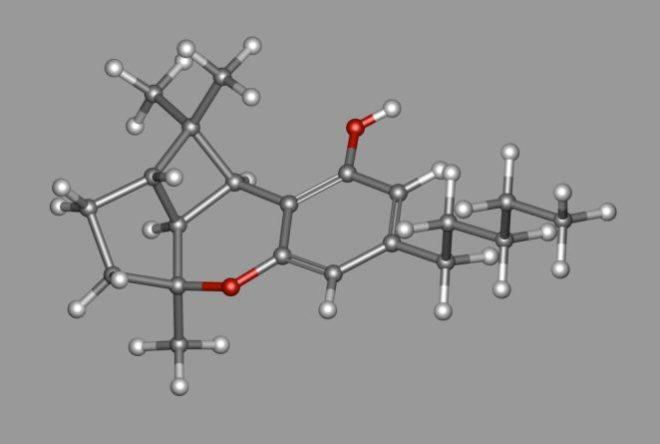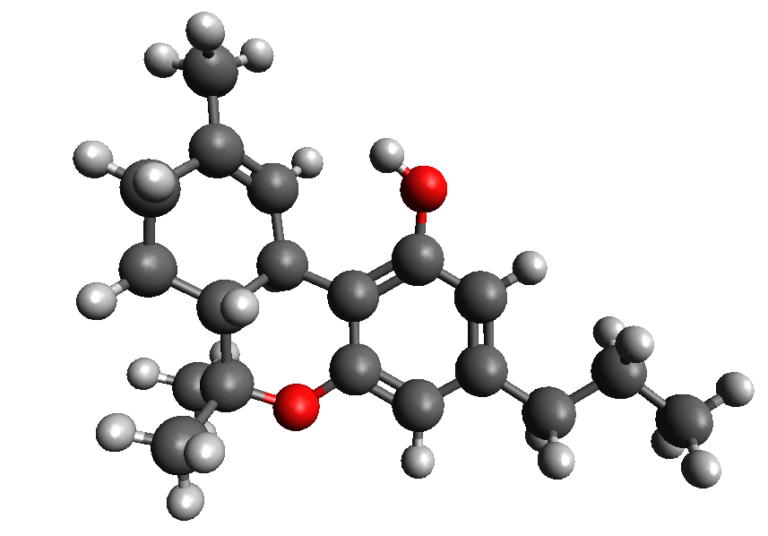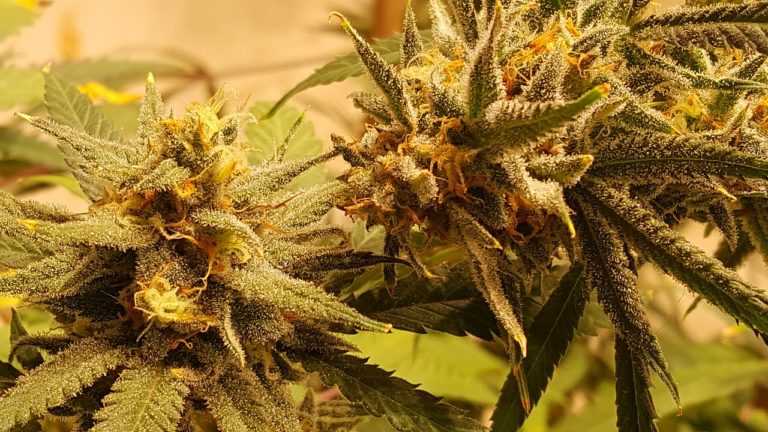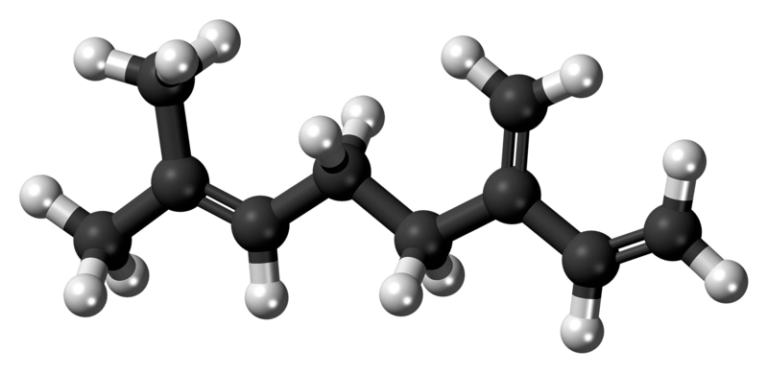Cannabichromene (CBC): a cannabinoid with therapeutic potential
List of contents
What is CBC?
- Name: Cannabichromene
- Formula: C21H30O2
- IUPAC name: 2-methyl-2- (4-methylpent-3-enyl) -7-pentylchromen-5-ol
- Molecular weight: 314.469 g/mol
- Boiling point: 220 ° C
Although the amount of cannabichromene that's normally found in analysis of modern cannabis flower or resin samples is relatively small, indeed significantly lower than that of THC, or even CBD (in many cases), CBC is still classified as a major phytocannabinoid produced by the cannabis plant, sharing as it does structural similarities with some of the most important cannabinoids (THC, CBD, CBN or THCV) and in fact sharing a formula with the much better known THC and CBD.
Cannabichromene was discovered in 1966 by Gaoni and Mechoulam on one hand and almost simultaneously by Claussen on the other, although since then little research has been carried out on this cannabinoid, with THC and CBD being the protagonists of the majority of subsequent studies. However, as we will see below, today there is a growing body of evidence demonstrating the tremendous therapeutic potential of this cannabinoid, especially in combination with other compounds in what is often referred to as an ?ensemble? effect.
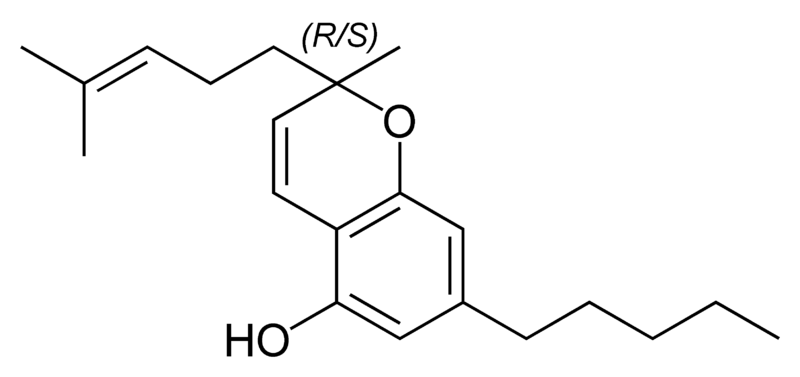
Synthesis of cannabichromene (CBC)
CBC is a non-psychoactive compound produced, as we saw in our article on cannabigerol (CBG) and the synthesis of cannabinoids, from the action of the enzyme CBCA-synthase, which transforms into CBGA in cannabichromenic acid or CBCA, the non-decarboxylated acid form of CBC. This, as with other cannabinoids, is decarboxylated and "activated? by losing a molecule of CO2, converting from CBCA to CBC. This can happen gradually with the passing of time (weeks or months) or when applying heat, in this case almost immediately.
While studies in the 1970s pointed to CBC as the second most abundant cannabinoid in cannabis plants, today it is highly doubtful that this remains the case, as hundreds of breeders from around the world have been selecting and crossing for decades seeking plants high in THC, and more recently CBD, or both. The 1970s studies used pure varieties available at that time, probably strains originating from the tropics, which tend to have a higher concentration of CBC, and have very little resemblance to modern commercial hybrids.
What we do know, as we saw in our article on the properties of CBN, is that in the same way that THC degrades to CBN when subjected to heat or UV rays, CBC will degrade to cannabicyclol (CBL) when subjected to such conditions.
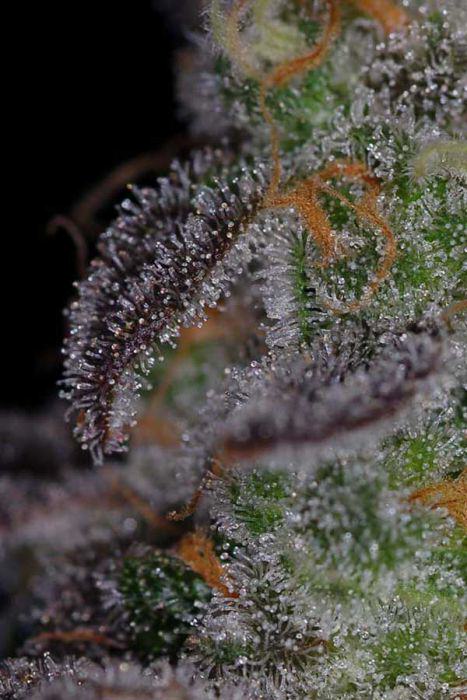
Properties and effects of cannabichromene (CBC)
Although further studies are needed to confirm that, like the rest of cannabinoids, CBC acts on CB1 and CB2 receptors in our nervous system, in this particular case we are aware of the interaction between cannabichromene and TRPV1 and TRPA1 receptors, which would explain its multiple medicinal properties and the increase in levels of endocannabinoids in the body, such as anandamide. Some studies on mice have shown that the administration of THC with CBC modulates the anti-inflammatory activity of the latter, suggesting a strong interaction between these two compounds.
Now let's take a look at some of the most important medicinal properties of CBC, which can be used as:
- Anti-inflammatory (a greater anti-inflammatory effect has been observed when THC and CBC are administered together, thus being more effective in treating conditions such as edema or inflammations of the intestinal tract)
- Antidepressant (as seen in recent studies, its antidepressant effect is far greater than CBD, although once again it seems that the "entourage effect" achieved by combining several compounds is much more effective than the isolated cannabinoid)
- Antinociceptive (reduction of pain caused by nerve damage)
- Analgesic/Reduction of pain (CBC acts in synergy with THC, so amplifying properties to relieve the pain of both cannabinoids)
- Neuroprotector (a study in mice showed in 2013 that CBC increases the survival rate of progenitor stem cells, increasing neurogenesis)
- Antibacterial and antifungal (as early as the 80's showed excellent antibacterial properties and moderate antifungal properties)
- Acne (as recently as 2016, the great advantages of CBC to treat this common disease have been analysed, as it reduces both the production of sebum by the sebaceous glands and the effects of arachidonic acid)
- Gastrointestinal and inflammatory disorders (possessing antidiarrheal properties and possibly very useful in the treatment of inflammatory bowel disease)
- It inhibits the absorption of anandamide, an endocannabinoid produced by our body (this has been linked to a reduction in various types of cancer, such as colorectal or breast cancer. It is thought that the indirect action of CBC upo the CB2 receptor could partly explain these properties)
- Migraines (studies for the reduction of migraines with CBC have yielded very promising results)

As can be seen, scientific research has already demonstrated a number of properties of CBC with huge therapeutic potential, although there is a lack of laboratory work and clinical trials to determine its applications in humans. It is certain that the research will continue, given the enormous potential shown by this cannabinoid, which is attracting more and more attention of researchers, breeders and seed banks every day.
The Future of CBC
Given the positive results obtained in the early studies into cannabichromene, new research projects are in fact increasingly numerous. Its multiple medicinal properties and its interaction with some of the most important cannabinoids, such as THC, have focused part of the attention of the scientific community on this interesting compound and its role in the so-called entourage or ensemble effect. Therefore it is not unrealistic to predict that soon we will be able to buy products containing CBC, as well as products with other non-psychoactive cannabinoids useful to treat certain ailments.
The growing interest in this cannabinoid and its relevance to the therapeutic sector will undoubtedly see the development of new CBC-rich varieties with a higher percentage of this cannabinoid. Current varieties like Williams Wonder or Psycho Crack from Sick Meds have a higher than average cannabichromene content, as does Timewreck from TGA Subcool.
Happy smoking!
Bibliography of studies and publications on CBC consulted for this article:
- Taming THC: potential cannabis synergy and phytocannabinoid-terpenoid entourage effects. Ethan B. Russo
- Biosynthesis of cannabinoid acids. Yukihiro Shoyama, Masahiro Yagi, Itsuo Nishioka
- Antibacterial cannabinoids from Cannabis sativa: a structure-activity study. Appendino G, Gibbons S, Giana A, Pagani A, Grassi G, Stavri M, Smith E, Rahman MM
- Cannabinoids stimulate fibroblastic colony formation by bone marrow cells indirectly via CB2 receptors. Scutt A, Williamson EM
- Constituents of Cannabis sativa L. XI: Cannabidiol and Cannabichromene in Samples of Known Geographical Origin. Janis HenryHolley, Kathy W.Hadley, Carlton E.Turner
- The Inheritance of Chemical Phenotype in Cannabis sativa L. Etienne P. M. de Meijer, Manuela Bagatta, Andrea Carboni, Paola Crucitti, V. M. Cristiana Moliterni, Paolo Ranalli, Giuseppe Mandolino
- Hashish components. Photochemical production of cannabicyclol from cannabichromene. Crombie L , Ponsford R , Shani A , Yagnitinsky B , Mechoulam R
- Antidepressant-like effect of ?9-tetrahydrocannabinol and other cannabinoids isolated from Cannabis sativa L. Abir T. El-Alfy, Kelly Ivey, Keisha Robinson, Safwat Ahmed, Mohamed Radwan, Desmond Slade, Ikhlas Khan, Mahmoud ElSohly, Samir Ross
- Pharmacological evaluation of the natural constituent of Cannabis sativa, cannabichromene and its modulation by ?9-tetrahydrocannabinol. Gerald T. DeLong, Carl E. Wolf, Alphonse Poklis, Aron H. Lichtman
- Inhibitory effect of cannabichromene, a major non-psychotropic cannabinoid extracted from Cannabis sativa, on inflammation-induced hypermotility in mice.
Angelo A Izzo, Raffaele Capasso, Gabriella Aviello, Francesca Borrelli, Barbara Romano, Fabiana Piscitelli, Laura Gallo, Francesco Capasso, Pierangelo Orlando, Vincenzo Di Marzo - The effect of cannabichromene on adult neural stem/progenitor cells. NorikoShinjyo, VincenzoDi Marzo
- Non-psychoactive cannabinoids modulate the descending pathway of antinociception in anaesthetized rats through several mechanisms of action. Sabatino Maione, Fabiana Piscitelli, Luisa Gatta, Daniela Vita, Luciano De Petrocellis, Enza Palazzo, Vito de Novellis, Vincenzo Di Marzo































































